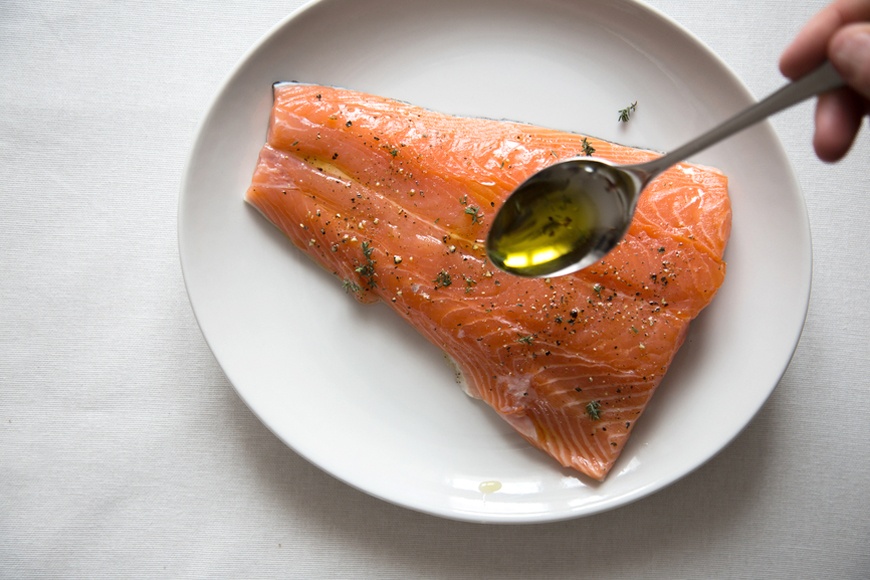If, once a month, cramps bring you and Advil together for a codependent relationship, it might seem like menstrual agony is just part of being a woman. Wrong, says women's hormone expert and Well+Good Council member Alisa Vitti. Her findings are as radical as they are life-changing: Cramps are totally optional. Believe it! Here, Vitti explains how to make micronutrients work for you (and against your worst PMS symptoms).
Periods are designed to be painful, right? That's what most people think—but as an expert in women's hormones, I'm pleased to report that it's simply not true. First, the function of your body states that we are not supposed to have pain. It's just not our natural state.
When a pain-causing condition like endometriosis or polycystic ovary syndrome (PCOS) isn't the culprit, menstrual cramps are often the product of micronutrient deficiency. The most important to know about are essential fatty acids, which are involved with the development of your body's prostaglandins—a group of lipids that, among other things, control uterine activity. Prostaglandins one (PGE1) and three (PGE3) control uterine relaxation, and prostaglandin two (PGE2) controls uterine contraction.
The function of your body states that we are not supposed to have pain. It's just not our natural state.
If your cramps feel like contractions as the bleeding starts, or you feel like you're having cramps but no period (i.e., you haven't started bleeding yet), that indicates a potential deficiency in essential fatty acids (such as those in fish oil and flax oil). And if you're eating fats that are high in omega-6 and omega-9—those like canola oil, safflower oil, and animal fats—your body will jack up production of PGE2 and you'll experience more pain.


{{post.sponsorText}}
Along with essential fatty acids, we need to talk about vitamin K1, vitamin K2, and magnesium. A lot of women are deficient in these micronutrients, which are also involved with controlling muscle contractions. If your cramps start well before your period does, that's a pretty good indicator of a magnesium deficiency. Something as simple as drinking two lattes a day could deplete you of your magnesium stores pretty quickly, so supplementing with water-soluble micronutrients is important. That's why I developed Balance by FLO Living supplement formulations. Together, they're an easy, manageable way to harness the PMS-minimizing and cramp-busting superpowers of micronutrients. As I like to say, one of each pill per day can help you get a better period by next month. (You could also take straight-up magnesium for period cramps.)
If your cramps start well before your period does, that’s a pretty good indicator of a magnesium deficiency.
To get a strong sense of what's going on with your cramps, I recommend tracking your period symptoms in the MyFLO app. It can help you understand when you're having them and why, and it provides suggestions for foods and supplements that can help you resolve the issues in a cycle or two. Yes, things can change that fast! In my practice, we see women who are able to get rid of their cramps pretty quickly just by changing the fats in their diet. (If you have pain that doesn't resolve, see a health-care professional.)
Periods can be a pain, but they don't have to be. So why not shift what you eat and see what happens? Add healthy fats (as though you need another reason to eat more guacamole!) and consider adding supplements. In hardly any time at all, your micronutrient stores should be replenished—and your periods should become a lot better to live with.
 Women's hormone expert Alisa Vitti is the creator of the MyFLO hormone-balancing period tracker app; the best-selling author of WomanCode, and the founder of FLOLiving.com, a virtual health center that supports women’s hormonal and reproductive health.
Women's hormone expert Alisa Vitti is the creator of the MyFLO hormone-balancing period tracker app; the best-selling author of WomanCode, and the founder of FLOLiving.com, a virtual health center that supports women’s hormonal and reproductive health.
What should Alisa write about next? Send your questions and suggestions to experts@www.wellandgood.com.
Loading More Posts...